Climate change
Haven't we heard enough about climate change? Is there really anything new to say? Well, I think so. A few weeks ago, the IEA (International Energy Agency), based in Paris, published a major study. It's a roadmap that shows how the world could find its way to almost zeroCO2 emissions by 2050. An important graphic is shown in Figure 1.
The figure is split into two halves - on the left-hand side it shows the historical increase in fossil fuel consumption, while on the right-hand side a possible projected decrease is shown. The reader will notice that coal, the dirtiest of all fuels, shows the biggest decline, followed by oil, which emits lessCO2, and lastly - as it contains the most hydrogen atoms - natural gas. The IEA report also states that, as of now, there is no need to explore and develop new coal mines or oil fields.
 Fig. 1: Possible roadmap for the global reduction of fossil fuel use. Vertical axis = exa joules
Fig. 1: Possible roadmap for the global reduction of fossil fuel use. Vertical axis = exa joules
The global implications of this scenario are enormous. Fossil fuel exporting countries will suffer a double blow. On the one hand, their exports of coal, oil and gas will shrink. But to make matters worse, the unit price of these fuels will also fall. We have known for a long time that the price of fossil fuels is very sensitive to market demand. So who will be the main losers? The following lists show the world's top 15 coal and crude oil exporters in 2019 and their respective percentage share of the global market:
Coal exporters
1. Australia: 44.4 billion dollars (37.5% of all coal exports)
2. Indonesia: 21.5 % billion dollars (18.2 %)
3. Russia: 16 billion dollars (13.5 %)
4. the USA: 9.8 billion dollars (8.3 %)
5. Colombia: 5.2 billion dollars (4.4 %)
6. Canada: 5.2 billion dollars (4.4 %)
7. South Africa: 4.8 billion dollars (4.1 %)
8. the Netherlands: 3.2 billion dollars (2.7 %)
9. Mongolia: 3.1 billion dollars (2.6 %)
10. Mozambique: 1 billion dollars (0.9 %)
11. China: 933 million dollars (0.8 %)
12. Poland: 623 million dollars (0.5 %)
13. the Philippines: 461 million dollars (0.4 %)
14. Kazakhstan: 450 million dollars (0.4 %)
15. Belgium: 217 million dollars (0.2 %)
Crude oil exporters
1. Saudi Arabia: 133.6 billion dollars (13.6% of all crude oil exports)
2nd Russia: 121.4 billion dollars (12.1 %)
3. Iraq: 83.3 billion dollars (8.3 %)
4. Canada: 68.1 billion dollars (6.8 %)
5. U. A. E.: 66.1 billion dollars (6.6 %)
6. USA: 65.3 billion dollars (6.5 %)
7. Kuwait: 42 billion dollars (4.2 %)
8. Nigeria: 41 billion dollars (4.1 %)
9. Kazakhstan: 33.6 billion dollars (3.3 %)
10. Angola: 32.3 billion dollars (3.2 %)
11. Norway: 28.8 billion dollars (2.9 %)
12. Libya: 24.8 billion dollars (2.5%)
13. Brazil: 24 billion dollars (2.4 %)
14. the UK: 23.7 billion dollars (2.3 %)
15. Mexico: 22.6 billion dollars (2.2 %)
Many of the countries listed here hardly export anything else. In other words, they are completely dependent on fossil fuel exports. What will the future hold for them? For Russia, for example, 80% of all exports are fossil fuels (oil, gas, coal). Then there are countries that export little coal but consume large quantities of coal domestically. German readers will be well aware of the problems on the German-Polish border. Figure 2 shows the location of the huge Polish coal mine in Turow, which is causing major problems in the region around Zittau (Germany). The EU plans to be carbon neutral by 2050, but at the moment Poland is exempt and Poland even plans to expand the use of coal. I have pointed out before that coal is the dirtiest of all fuels. This label should actually go to lignite, which is found in the region around Turow and also in the Czech Republic and Germany.
A carbon border tax?
 Fig. 2: The huge Polish coal mine near Turow is not a good neighborIhave no idea how the EU will handle the situation in Poland, and Serbia is also a big user of coal. But countries like China and India, both among the world's biggest coal users, are free to act as they wish and we can't control their carbon emissions. China has plans to build 147 GW of new coal-fired power plants. And so the idea of a carbon border tax has been proposed. Goods imported into a country would be subject to an import tax based on carbon emissions in the country of origin. The EU has promised to come up with proposals this month (July) and President Biden and other leaders are looking into the idea. But how would such a tax work? Would theCO2 content of each material be calculated separately for a car made of, say, steel and aluminum and other materials? That would be enormously complicated. Or would all goods coming from a particular country be taxed at the same rate? That would be detrimental to a poor economy like India. And in a recent referendum in Switzerland, the government's proposal to increase fuel tax was rejected. Creating a "greener world" will lead to major economic changes worldwide. There will be winners and losers, and we as individuals will have to pay a price. It is clear, as in Switzerland, that many are not prepared to do this. In a democracy, the will of the people prevails. But are they prepared to pay?
Fig. 2: The huge Polish coal mine near Turow is not a good neighborIhave no idea how the EU will handle the situation in Poland, and Serbia is also a big user of coal. But countries like China and India, both among the world's biggest coal users, are free to act as they wish and we can't control their carbon emissions. China has plans to build 147 GW of new coal-fired power plants. And so the idea of a carbon border tax has been proposed. Goods imported into a country would be subject to an import tax based on carbon emissions in the country of origin. The EU has promised to come up with proposals this month (July) and President Biden and other leaders are looking into the idea. But how would such a tax work? Would theCO2 content of each material be calculated separately for a car made of, say, steel and aluminum and other materials? That would be enormously complicated. Or would all goods coming from a particular country be taxed at the same rate? That would be detrimental to a poor economy like India. And in a recent referendum in Switzerland, the government's proposal to increase fuel tax was rejected. Creating a "greener world" will lead to major economic changes worldwide. There will be winners and losers, and we as individuals will have to pay a price. It is clear, as in Switzerland, that many are not prepared to do this. In a democracy, the will of the people prevails. But are they prepared to pay?
Sustainable energy sources
Wind turbines are being built all over the world, on land and at sea, and the price of wind energy has been falling steadily and is now around 60 Euro/MWSt, lower than most other energy sources. But there will still be a need for energy sources that are not dependent on the weather or the time of day. Nuclear power continues to be a big problem, large nuclear plants (around 3GW) being built in England, France and elsewhere are experiencing delay after delay as their costs continue to escalate. While in England the Hinkley Point plant is due to be completed by 2026, there is still debate about whether to build a similar plant in Essex. The electricity costs of the Hinkley Point plant are estimated at around 110 Euro/MWSt.
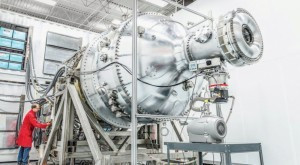 Fig. 4: Experimental fusion reactor (Photo: General Fusion, Canada)The focus is now on SMRs (Small Modular Reactors). These would be manufactured in factories (i.e. independent of the weather) and transported to their destination on trucks. Rolls-Royce (which has decades of experience in building submarine KKRs) believes it can deliver these by 2030 and there are certainly similar projects in Russia and the US and probably China. SMRs would typically have a capacity of around 400 MW. You could say that there is a race to see who can produce the first commercial SMR.
Fig. 4: Experimental fusion reactor (Photo: General Fusion, Canada)The focus is now on SMRs (Small Modular Reactors). These would be manufactured in factories (i.e. independent of the weather) and transported to their destination on trucks. Rolls-Royce (which has decades of experience in building submarine KKRs) believes it can deliver these by 2030 and there are certainly similar projects in Russia and the US and probably China. SMRs would typically have a capacity of around 400 MW. You could say that there is a race to see who can produce the first commercial SMR.
Behind this lies the ultimate goal of the fusion reactor, which produces no radioactive waste. Here too, several nations are developing this technology, either individually or as international groups. In recent weeks, the Canadian company General Fusion, with financial backing from Jeff Bezos (Amazon), one of the richest men in the world, has announced that it is building a prototype in Culham (near Oxford, England). Figure 3 shows what the plant will look like, Figure 4 shows an earlier, smaller test reactor. The opinion among experts is that successful fusion technology is no longer a question of if, but only a question of when. As with SMRs, there is now a race to see who will develop the first commercial reactor. And as with SMRs, we have little idea what will happen in Russia or China.
Conclusion: Creating a "greener world" will lead to major economic changes worldwide. There will be winners and losers, among the latter mainly Australia, the Middle East and Russia. The losing countries may then have less money to buy products (such as cars) from Europe, Japan and the USA. How and where will Germany fit into this future? I don't know.
Quatar Airways is unhappy
Quatar Airways is a major customer of Airbus and has ordered large numbers of the Airbus A350. However, the airline of the Gulf state has now grounded some of its aircraft in a dispute with Airbus and stopped new deliveries. Quatar is the second largest user of the A350 worldwide after Singapore Airlines and has 53 aircraft of this type in operation, which corresponds to 12 percent of all aircraft. A further 23 aircraft have already been ordered. The A350 accounts for almost a quarter of Qatar's fleet of 235 aircraft. The airline claims to have noticed that the surface beneath the paint of some of its Airbus A350 aircraft is degrading at an accelerated rate. The airline has grounded part of its fleet "until the condition and cause can be understood and rectified." The airline continued: "Qatar Airways will require this condition and the underlying cause to be fully understood and resolved before any further Airbus A350s are delivered." The head of Qatar Airways is Akbar Al Baker, who is known for being a tough negotiator, and perhaps he has other reasons for delaying the delivery of more aircraft. However, underbody corrosion of painted aluminum is a known problem. The problem arose when Quatar sent a four-year-old A350 to Ireland for repainting, and the airline now wonders how many other of its A350s have the same problem. Figure 5 shows the work in the Irish paint shop.
Green heat for older homes
 Fig. 5: Repainting an A350 in IrelandNotevery house is suitable for the installation of a heat pump or is close to the gas pipeline that could one day be converted to hydrogen. For such cases, a small start-up company has developed a very large heat storage system. Houses could be kept warm with huge 'heat batteries' developed by a UK start-up that has received support from the government and external investors. Caldera (www.caldera.co.uk), based in Hampshire, UK, uses cheap off-peak electricity and electrical elements to heat a giant highly insulated block of material called Warmstone, which is made from recycled metals and aggregates. A coil of water pipes runs through the block and heats water which can then be used in a conventional central heating system with radiators and a hot water cylinder.
Fig. 5: Repainting an A350 in IrelandNotevery house is suitable for the installation of a heat pump or is close to the gas pipeline that could one day be converted to hydrogen. For such cases, a small start-up company has developed a very large heat storage system. Houses could be kept warm with huge 'heat batteries' developed by a UK start-up that has received support from the government and external investors. Caldera (www.caldera.co.uk), based in Hampshire, UK, uses cheap off-peak electricity and electrical elements to heat a giant highly insulated block of material called Warmstone, which is made from recycled metals and aggregates. A coil of water pipes runs through the block and heats water which can then be used in a conventional central heating system with radiators and a hot water cylinder.
Weighing 1.7 tons and measuring 1.7 meters high with a diameter of 1 meter, the heat battery is designed to be installed outside a property and is primarily intended as a replacement for oil or LPG (Liquefied Petroleum Gas) boilers, which are used in more than one million of the households that are not connected to the gas grid.
Oil heating is set to be phased out in the coming years to meet climate targets, but switching to electrically powered air or ground source heat pumps is likely to prove difficult in older homes with solid walls and poor insulation.
Heat pumps can cost between €6000 and more than €15,000 to install, depending on the type, but insulation and other modifications to make them work efficiently could increase the total bill to more than €25,000 in some solid walls.
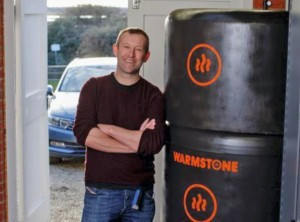 Fig. 6: The Caldera unitCalderaclaims that its heat battery, which will retail at around €13,000, offers a cost-effective, low-carbon alternative and can be used in place of an oil tank and boiler without further renovation work.
Fig. 6: The Caldera unitCalderaclaims that its heat battery, which will retail at around €13,000, offers a cost-effective, low-carbon alternative and can be used in place of an oil tank and boiler without further renovation work.
The proposal relies on the use of smart meters and variable electricity pricing to heat the battery at cheap off-peak rates, such as when there is a surplus of wind power. Caldera says several companies offer off-peak electricity at rates that would make operating costs comparable to or cheaper than an oil-fired boiler.
Founded in 2017, Caldera has so far received around £1.2 million in funding from the UK government and official bodies and is supported by the Energy Systems Catapult. Guy Newey, director of strategy at the independent, government-backed innovation agency, said: "Caldera has created a potentially ground-breaking technology with Warmstone and we are working hard to help them bring it to market." The unit, shown in Figure 6, is capable of providing central heating to a four bedroom house, even on the coldest winter days.
Caldera is now running an external fundraising round, which has so far raised more than £600,000 (approx. €700,800) through a combination of crowdfunding, other private investors and a strategic investment of £130,000 (€152,000) from German multinational König Metall.
Chemical and mechanical cleaning are not the only way
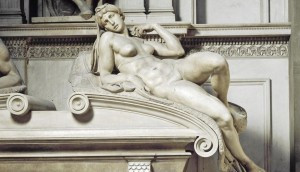 Fig. 7: Microbial cleaning has restored the beauty of Michelangelo's marble sculpturesAssurface technicians, when we think of cleaning problems we tend to think of chemical or perhaps mechanical methods, maybe even ultrasound. But a slightly different approach comes from Italy. Michelangelo's marvelous marble sculptures have been on display in Florence and other Italian cities for hundreds of years (Fig. 7). No wonder they have gradually become soiled with soot and dust and other impurities from the city air. So what is the best way to clean these priceless treasures? Italian scientists have used the pandemic lockdown to experiment with using bacteria as a cleaning agent on Michelangelo's marble statues in the Medici Chapel in Florence, unleashing a benign bioweapon on the centuries-old grime. The microbes devoured oil, glue and phosphates that had resisted traditional cleaning methods. Advised by scientists from the Italian technology research agency ENEA, the art restorers selected strains of bacteria that could selectively remove stains. They collected them from tannery waste, soil contaminated with diesel and soil containing heavy metals from a mine. One species, Serratia ficaria SH7, removed traces of decomposition from the corpse of Alessandro de Medici, who was murdered in 1537. "His sarcophagus caused the most problems because the corpse had not been disemboweled. The substances that arose during decomposition had gone straight through the marble," says researcher Anna Rosa Sprocati.
Fig. 7: Microbial cleaning has restored the beauty of Michelangelo's marble sculpturesAssurface technicians, when we think of cleaning problems we tend to think of chemical or perhaps mechanical methods, maybe even ultrasound. But a slightly different approach comes from Italy. Michelangelo's marvelous marble sculptures have been on display in Florence and other Italian cities for hundreds of years (Fig. 7). No wonder they have gradually become soiled with soot and dust and other impurities from the city air. So what is the best way to clean these priceless treasures? Italian scientists have used the pandemic lockdown to experiment with using bacteria as a cleaning agent on Michelangelo's marble statues in the Medici Chapel in Florence, unleashing a benign bioweapon on the centuries-old grime. The microbes devoured oil, glue and phosphates that had resisted traditional cleaning methods. Advised by scientists from the Italian technology research agency ENEA, the art restorers selected strains of bacteria that could selectively remove stains. They collected them from tannery waste, soil contaminated with diesel and soil containing heavy metals from a mine. One species, Serratia ficaria SH7, removed traces of decomposition from the corpse of Alessandro de Medici, who was murdered in 1537. "His sarcophagus caused the most problems because the corpse had not been disemboweled. The substances that arose during decomposition had gone straight through the marble," says researcher Anna Rosa Sprocati.
The restorers also used bacteria to remove candle stains from Alessandro Algardi's Meeting of Attila and Pope Leo, a marble relief in St. Peter's Basilica in Rome.
Sprocati said the results showed that the technique was ready for wider application. Almost certainly these methods will be rather slow, but even so there may be specific cases where we can use them.
Electric cars: not so green after all?
According to one study, electric cars have to travel up to 80,000 km to achieve the samecarbon footprint as a gasoline model, as a large amount of energy is consumed during the production process. The production of an electric car causes high greenhouse gas emissions, mainly due to the battery pack and other polluting materials, according to the study.
It reports that the production of a Volvo Polestar 2 electric car generates 24 tons of carbon dioxide (CO2). This compares to 14 tons for the production of a fossil fuel-powered Volvo XC40. The analysis says that the difference is made up over the life of the vehicle, reflecting the use of a battery over petrol or diesel, although drivers have to drive the electric car almost 80,000 km before itscarbon footprint is less than that of a conventional vehicle. This distance drops to 50,000 km if all the electricity used comes from renewable sources. The researchers found similar results for other cars, including Volkswagen's e-Golf and its diesel counterpart. Some of the data is shown in Figure 8.
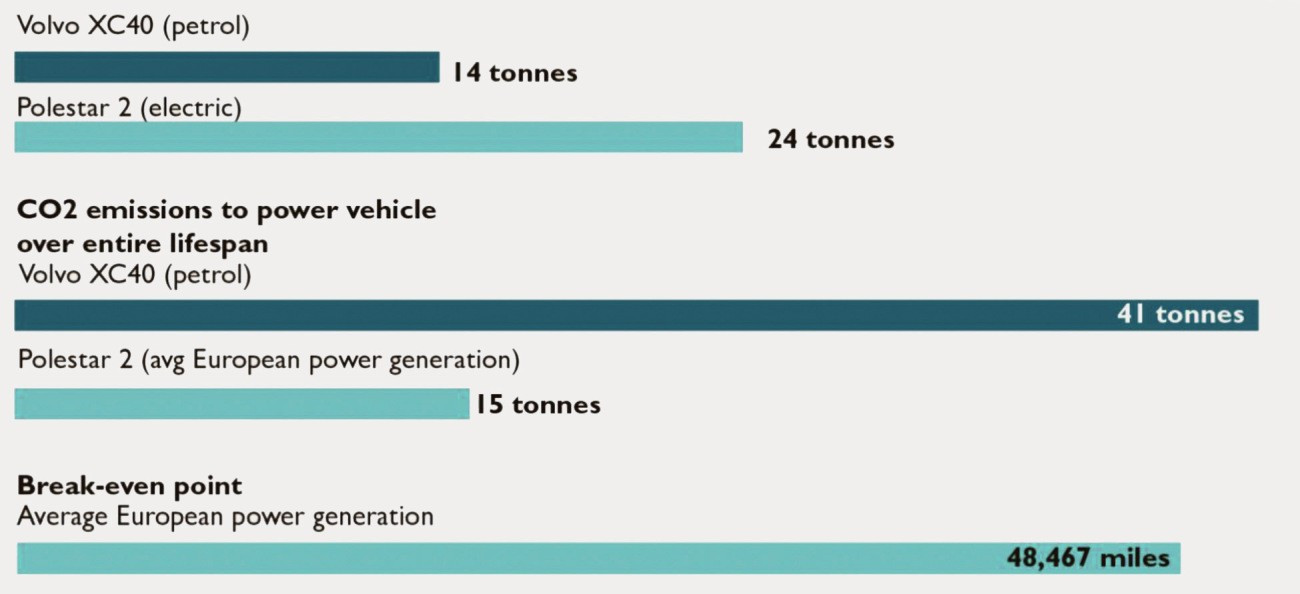 Fig. 8: CO2 generated during car production
Fig. 8: CO2 generated during car production
The study, commissioned by vehicle and technology companies including Honda, McLaren, Aston Martin and Bosch, says there is no silver bullet to clean up the road transportation system. It states that focusing on a vehicle's tailpipe emissions - the measure typically used to justify a switch from fossil fuels to electric vehicles - is too simplistic.
The report states that "more transparency on the totalcarbon footprint" of vehicles is needed from car manufacturers. It suggests that cars need a similar system to an energy performance certificate, which applies to homes sold in the UK.
How we are getting older
The average age of Europeans is steadily increasing and with it the cost to the taxpayer. We need to do everything we can to keep older people mobile. One of the most common accidents is that older people lose their balance, fall and injure themselves. A newly developed, very simple device minimizes this risk.
Researchers have developed a small thimble-like device that can help its wearers keep their footing when they lose their balance. The scientists hope that their invention will significantly reduce the number of falls among elderly or frail people. The device detects when someone is swaying and then emits a tiny vibration that nudges the wearer enough to regain their balance. The device was inspired by a recently discovered phenomenon where even the lightest touch is enough to prevent a fall. Previous experiments have shown that a person lightly touching a curtain or a piece of paper hanging in front of them with just their fingertips can reduce swaying, even if the person's eyes are closed. The phenomenon, which the researchers do not yet fully understand, also exists when the object is not firm enough to support them.
The new device, shown in Figure 9, was developed in Japan at Yokohama National University and the Prefectural University of Hiroshima.
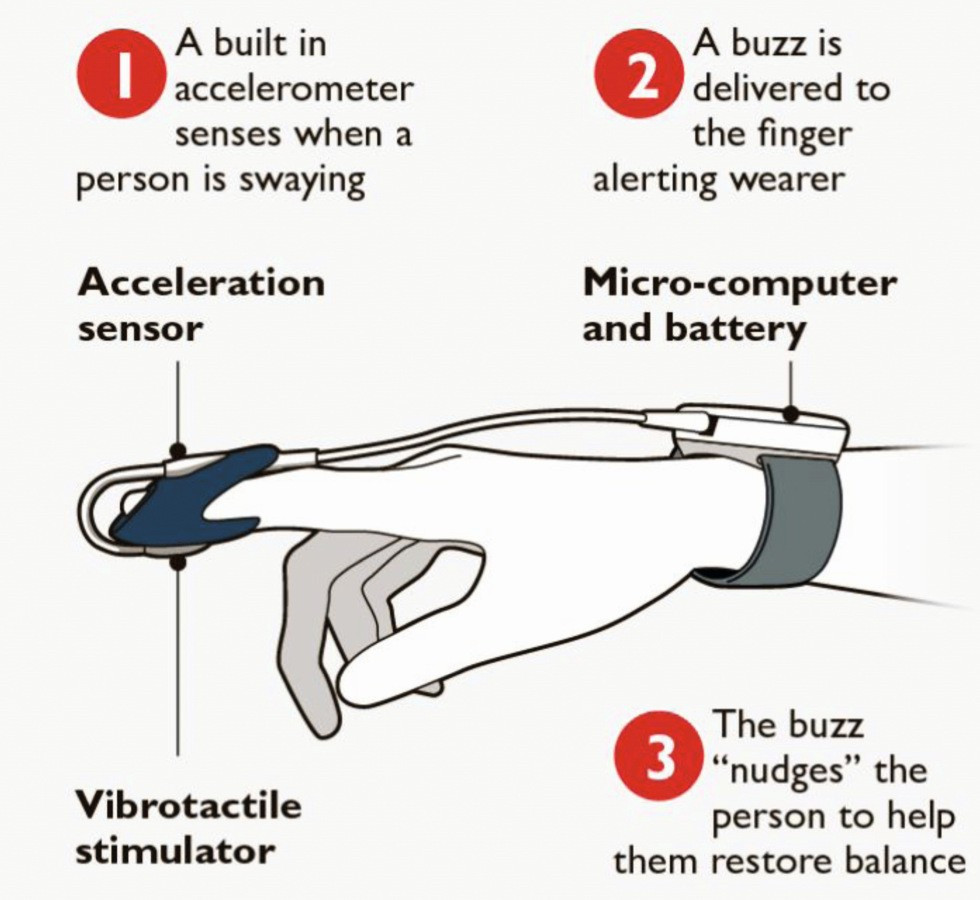 Fig. 9: A simple device to prevent falls
Fig. 9: A simple device to prevent falls
As we age, our sense of balance can deteriorate because the cells in the vestibular system in the inner ear, where we sense balance, die. This can lead to a slight sway when standing and walking and subsequently to a fall. Although assistive devices can help, researchers have found that using them in certain circumstances, such as on the stairs or getting in and out of a car, can impair the sense of balance even further and increase the risk of injury.
The new device, which is shaped like a thimble and covered in silicone rubber, is worn over the top of the person's dominant index finger, with a wire connected to a small computer worn on the wrist that looks similar to a smart watch. The virtual, easy-to-use device uses an accelerometer found in smartphones that detects any change in acceleration to send data to the microcomputer on the wrist. If it detects that someone is starting to sway, the device gives a "nudge" in the form of a vibration to the fingertip. The intensity and direction of the vibrations correspond to the direction and strength of the swaying.
The researchers said the system was tested on 150 volunteers aged 60 to 90 by getting them to stand with the toe of one foot against the heel of the other. They found that wearing the device restored balance in the same way as touching a physical curtain, and "significantly less" than someone who just waved their hand in the air to maintain balance. The researchers say they want to improve the device by making it lighter and more compact. It joins a growing number of gadgets that can send alerts when someone has already fallen over. The Apple Watch can detect if someone has suffered a serious fall and will call emergency services if it detects that the person is then immobile for a minute and unresponsive to notifications. The smart watch will then also send a message to the wearer's emergency contacts to let them know that there has been a hard fall.
A new material
 Fig. 10: 3D-printed chess pieces showing (right) the characteristic Schreger lines of real ivoryAsynthetic material that looks like elephant ivory and can be 3D printed at high resolution - called "Digory" for "digital ivory" - is being used to restore historical artworks that contain ivory from elephant tusks.
Fig. 10: 3D-printed chess pieces showing (right) the characteristic Schreger lines of real ivoryAsynthetic material that looks like elephant ivory and can be 3D printed at high resolution - called "Digory" for "digital ivory" - is being used to restore historical artworks that contain ivory from elephant tusks.
The researchers say it will be invaluable for restoration projects. Genuine elephant ivory was often used for important works of art, especially in ancient China over thousands of years.
The material could also help prevent poaching, which threatens the survival of wild elephants in many parts of the world. There should be no demand for ivory from animals at all. "There are so many alternatives," says Dr. Thaddäa Rath from TU Vienna. No piece of jewelry or decoration is worth the death of a single animal.
Dr. Rath and a team led by materials scientist Dr. Jürgen Stampfl developed the new material. It is made from a translucent mixture of synthetic acrylic resin and particles of tricalcium phosphate. It was used to reproduce several tiny ivory ornaments that had been lost from an ornate 17th century casket in a church in Mauerbach, Austria. Figure 10 shows two chess pieces printed using the new technology. The piece on the right reproduces the characteristic Schreger lines found in real ivory pieces.
Elephant ivory was once commonly used for such artworks, but the international trade in ivory has been banned since 1989. Restorers are now reluctant to use real elephant ivory and it has become extremely expensive, even though its use in small quantities is permitted under international law.
Instead, the research team and Cubicure (www.cubicure.com), a precision 3D printing company spun off from the university, used Digory to produce 18 of the finely carved and decorative ivory capitals missing from the Mauerbach casket.
Other synthetic ivories already exist, but according to the researchers, Digory is the first to be printed at high resolution using stereolithography. In this process, polymers in the 3D ink are cross-linked with laser light and complex shapes are built up layer by layer.
Digory has the same optical and mechanical properties as elephant ivory, say the researchers. It can be color-matched and shaped into any desired form, and it can then be polished, carved, drilled or glued like real ivory. The dark veins that are often visible in elephant ivory can also be recreated by freshening it up with a color mixture of black tea.
Dr. Ulrike Wegst, a materials scientist and engineer at Northeastern University in Boston, USA, who studies bio-inspired materials, says Digory is a timely addition to the field that could help prevent further poaching of elephant ivory. The additive process of 3D printing is ideal for materially and cost-effectively reproducing intricate old designs, as well as producing elaborate new designs that would otherwise require highly skilled specialist artists.
Dr. Wegst, who was not involved in the research, thinks it will be interesting to observe whether Digory "ages" similarly to real ivory, which changes color over time, and whether the additives used in its manufacture can prevent it from becoming brittle like some other polymers.
Source: T Rath et al, Appl. Mater. Today, 2021,
DOI: 10.1016/j.apmt.2021.101016


